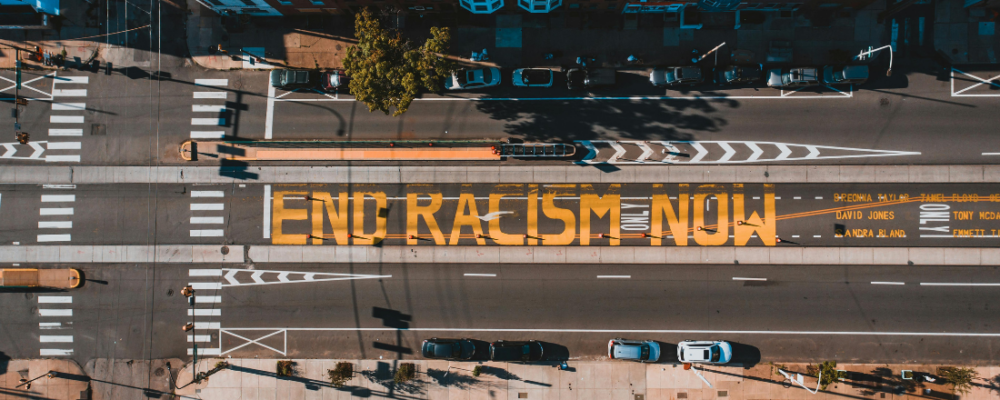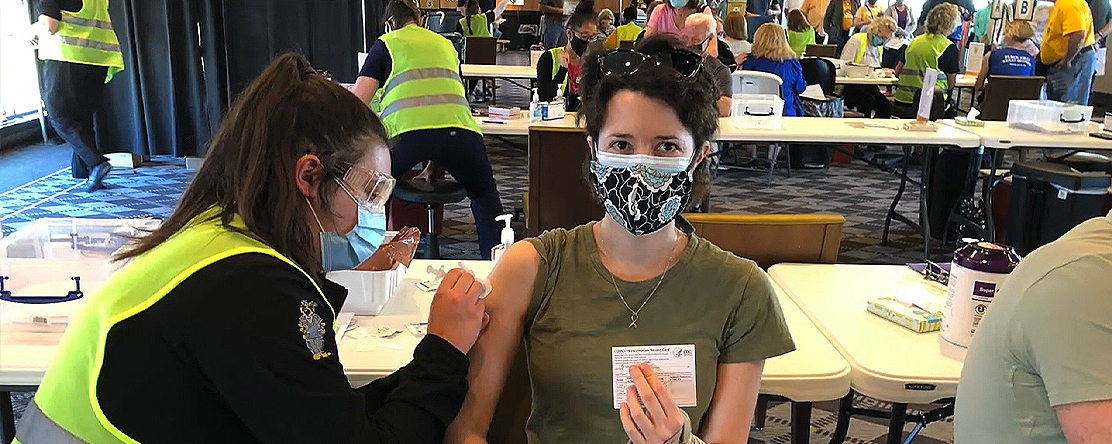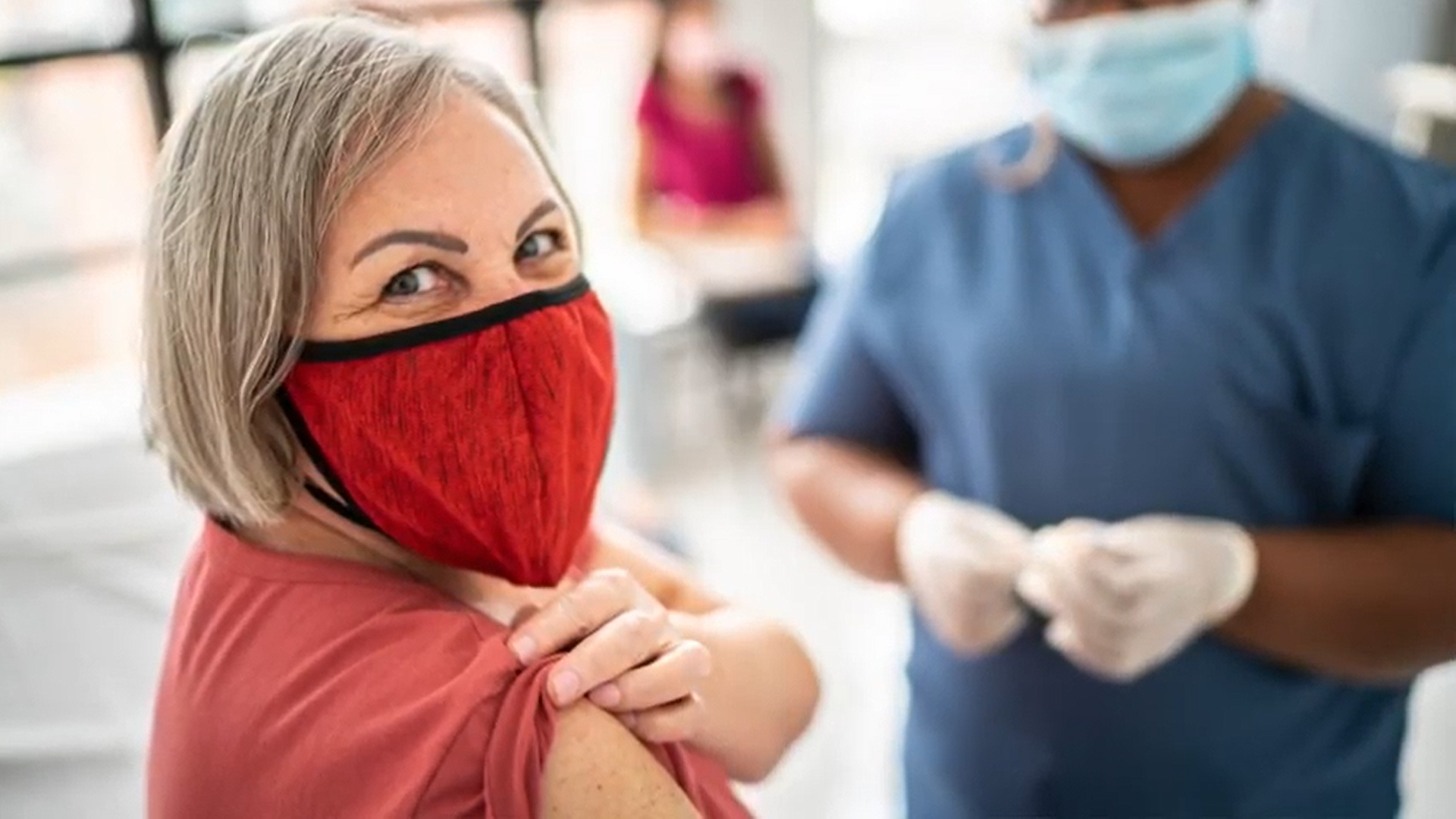
Video Series: Communicating About Vaccines
- Lori Dorfman, DrPH, MPH
- Heather Gehlert
Sarah Perez-Sanz
Pamela Mejia
Kim Garcia
Shaddai Martinez-Cuestas
-
Focus Areas
Capacity Building & Leadership, Communicable Disease Prevention -
Expertise
Media Advocacy & Communications -
Programs
Berkeley Media Studies Group -
Strategic Initiatives
COVID-19, Vaccine Access & Equity

Find strategic guidance, tips and examples for how public health practitioners and advocates can communicate effectively about vaccines in ways that foster trust, in this video series from PHI’s Berkeley Media Studies Group.
Communicating about vaccines: Meeting people where they are
Shame is all too common in communication about vaccines, but we should avoid it because it is not effective at changing individuals’ hearts and minds. Instead, as research has shown, we need to demonstrate empathy, listen without judgment, and share messages using credible local spokespeople who are easy for audiences to relate to. Learn more in this video, the fourth in a series from Berkeley Media Studies Group.
Transcript
Best practices in strategic communication tell us that shame is not an effective tool for changing individual behavior. This is true for any health issue, including vaccination.
PAMELA MEJIA, BMSG HEAD OF RESEARCH: When people feel shamed or stigmatized about their choices, they tend to retreat; they tend to become defensive; they stop asking questions; they close themselves off to new information. So, you can clearly see how, in the context of immunizations, shame would be very problematic.
Parents who feel that they are being shamed or branded as anti-vaxxers just for asking questions about medical treatments for their child might become very defensive, might retreat further into distrust and dislike of the medical community and vaccinations.
I think establishing trust and rapport is critical to communicating effectively about vaccines and why they matter.
NARRATOR: That begins with our messages — and our willingness to listen.
MEJIA: So, language is a really important consideration. I always advise people to try and avoid the phrase anti-vaxx or anti-vaxxer because it is stigmatizing; it is limiting; it does make people defensive and can close them off to hearing more information. There is value in using phrases like “people who are questioning” or “people who are unsure about vaccination.”
NARRATOR: It’s also important to listen without judgment when questions arise.
MEJIA: We talk about meeting people where they are — well, we really have to be in there with people to do that. It is completely normal and valid and right and to have questions, especially about something that is going into your body or the body of somebody that you love.
I would caution people who are trying to communicate about vaccines — I would caution them against pretending that misinformation doesn’t exist. To put another way, I think we just need to acknowledge that there’s a lot of information out there; we need to make people feel comfortable and heard in having questions about it, and we need to share that we’re kind of all living in this information-overload world.
NARRATOR: In an op-ed for The Cincinnati Enquirer, two co-founders of a community engagement start-up emphasize the importance of listening directly to community residents’ concerns. They held six focus groups in Ohio “to identify strategies to encourage more people to feel comfortable receiving the vaccine.” Their top lessons included acknowledging hesitancy with respect, focusing on how vaccination keeps vulnerable people safe, and using relatable local messengers.
MEJIA: There are some people who, perhaps, will never be moved on vaccinations. But there are many people who are just questioning, who just want to know a little bit more, who just need a little bit of reassurance. I think it’s important that we focus on people who, maybe are questioning but can be moved, who can — with additional information, with additional space to ask questions, with authentic messengers they can relate to — might well be moved to embrace vaccines and embrace being immunized.
Communicating about vaccines: How to discuss racial equity in vaccine uptake
To help ensure equitable vaccination rates in all neighborhoods, public health advocates and practitioners must center communities of color in their messages. Being silent on racism allows vaccine opponents to invoke medical oppression in their communication, stoking further division, hesitancy, and distrust. This video, the third in a series from BMSG, offers strategic communication tips for advancing racial and health equity in immunizations.
Transcript
[KIM GARCIA, BMSG RESEARCHER]: Communities of color have many reasons for having hesitancy around vaccines. Medical racism and medical oppression have been experienced and continue to be experienced by people of color. There’s also a lack of representation of providers — medical providers and even public health practitioners, who we see in our communities who may not look like us, and so there’s a barrier of trust that needs to be built when we don’t see ourselves or see our lived experiences represented.
[NARRATOR]: So, how do we go about building trust with community partners? For starters, public health advocates and practitioners cannot stay silent on racial inequity and the structures that create it.
[GARCIA]: To leave race out of the conversation is really leaving it up to vaccine opponents to take up that issue themselves. We found that vaccine opponents bring up instances of medical racism and medical oppression ultimately to undermine trust in the medical system. By using race to divide us, they’re turning us against each other, they’re turning us against medical providers and government overall.
[NARRATOR]: When advocates address racial equity in messages about vaccines, they must go beyond acknowledging past harms.
[SHADDAI MARTINEZ-CUESTAS, BMSG HEAD OF TRAINING]: Focusing on hesitancy has been a way to deflect responsibility for equitable distribution on the front end.
[NARRATOR]: To make sure their messages don’t reinforce hesitancy, advocates must also discuss structural barriers, many of which predate the pandemic.
[GARCIA]: Lack of health insurance, lack of transportation, lack of housing that gives someone a safe and stable place to even think about getting vaccinated in the first place. We know that, for example, even your zip code could be shaping your risk for exposure. We also we can talk about lack of protections that are in place for frontline and essential workers, who are predominantly people of color.
And so, that really points to someone in power who can put those protections in place. So, when we talk about the landscape, when we talk about the structures that can hinder people’s access to vaccines, we can then point to solutions that are structural and systemic solutions. Rather than “this person needs to be able to get a vaccine,” but, “how can we improve our structures and systems so that all people can get vaccines?”
[MARTINEZ-CUESTAS]: I want to point out an article by Politico that it is focusing on the systems instead of just blaming individuals. The chief medical executive of Minnesota has a really great quote in this article, talking about how the best public health happens when you go into neighborhoods and when you’re working with communities and how it is the duty and responsibility for public health to go to where their communities are at.
[NARRATOR]: Advocates can also advance equity by including values in their messages.
[GARCIA]: When we talk about vaccines, we’re really thinking about the greater good, our collective, our community. These are the values that we hold because we know that communities of color are being disproportionately impacted by COVID-19. Vaccine opponents, on the other hand, tend to use a very individual frame; they really look at my personal choices, my personal freedoms. That creates greater division and, if we stay silent on racial equity from a public health side, vaccine opponents will only continue to stoke those divisions.
Communicating about vaccines: Illuminating the context for access and hesitancy
To boost vaccine rates, public health practitioners and advocates need more than just compelling messages; we also must confront the practical barriers that make it hard for some people to access the vaccine — and credible information about it. In this video, the second in a series from BMSG, we discuss the context for why vaccination rates are lagging in some communities. Learn more about COVID-related communication and view other videos at www.bmsg.org/covid-19.
Transcript
[NARRATOR]: There’s no shortage of news about COVID-19 vaccination rates. Stories about state and national rankings, pockets of vaccine hesitancy, and the health consequences of being unvaccinated routinely make headlines. Less common are stories that make visible the context for whether people can easily access the vaccine and credible information about it. BMSG’s research team has gained insight into what’s missing from conversations surrounding vaccination, after studying news coverage of the issue.
[PAMELA MEJIA, BMSG HEAD OF RESEARCH]: One of my favorite quotes that came from the research that we did was from a physician who talked about vaccine deserts. So, these are places where access to vaccination sites is very, very limited: There might be very few of them; they might have limited hours, limited staff; they might be difficult to access via public transportation; they might be difficult to access financially.
Communities that have been marginalized and tend to be ignored for things like healthy food, for health care facilities, etc., they also tend to be ignored and left out of access to vaccination sites. As advocates and practitioners — as people who want to increase rates of vaccination — we have to illustrate for folks that sometimes many people want to be vaccinated, but they simply can’t.
[NARRATOR]: Although stories illustrating access issues are relatively rare, our researchers did find some good examples. In this article from The Washington Post, the executive director of the American Public Health Association explains why it’s important to expand coverage in ways that highlight practical barriers. He says, quote, “If you’ve got to take two buses and walk a few blocks, plus hesitancy, where is the incentive to go get that shot?”
Another factor hindering vaccination rates is a lack of access to trustworthy information about it.
[PAMELA MEJIA, BMSG HEAD OF RESEARCH]: There is a long history of misinformation and disinformation from vaccine-hesitant or vaccine-skeptical folks. It’s interesting that they — that vaccine opponents tend to sow a lot of distrust of medical science and medical professionals because, at the same time, they try to evoke or mimic medical professionals and medical work.
When we were doing our analysis of documents, we found a number of fact sheets from organizations like the CDC, and we also found fact sheets that looked almost identical in terms of their layout, their formatting, some of their language choices, etc., but they came from vaccine-hesitant or vaccine-skeptical organizations.
There’s no way of knowing what the individual media environment or messaging environment somebody’s been exposed to is, which makes it doubly important that we be reflective of and acknowledge access issues, and, you know, really be prepared to talk about some of the uncomfortable questions that people may have. We need each other’s help in figuring out where to go and where to ask questions and what information to trust when it comes to vaccinations.
Look at who’s providing the information — whether it’s from a reputable source or not. If data is being cited, is it coming from a reputable place, or, um, is it sourced at all? If data is presented without a citation, that’s a sign that this might not be a very good source. And look at the timeliness; look at how current the information that’s being presented is.
Establishing that there are questions, there is competing information, that there can be a lot of confusing and conflicting information in the world is an important step towards making people feel heard. It’s kind of a way of acknowledging our shared humanity.
Communicating about vaccines: Investing in trusted messengers
Transcript
[NARRATOR]: Vaccines save lives. We know that from research, but many people remain hesitant to get their shots.
To boost confidence in the vaccine, we not only need to give people access to it in places they trust, but we also need to deliver accurate information about it through trusted messengers.
[SARAH PEREZ-SANZ, BMSG RESEARCHER] Dr. Anthony Fauci is definitely an expert, but some people may think that, oh, he doesn’t know enough about my family. He’s not an expert in my kids.
[SURGEON GENERAL DR. VIVEK MURTHY]: What we have to do is not only get information out there through traditional sources and through the media; it’s working with local nurses and doctors, with teachers, with faith leaders, and others in local communities to make sure they have information that they can use to share.
[NARRATOR]: Research from the Berkeley Media Studies Group aligns with the surgeon general’s recommendation.
[PEREZ-SANZ]: So, you know, data is important. We collect data as part of our research, but stories are really what drives the data home for people. So, if someone has their own experience from going from vaccine hesitancy to having their kids or themselves fully vaccinated, that journey is really important to share with others. And while we can capture that in our research as data, it really only matters to people if you tell the story of how they went from vaccine hesitant to fully vaccinated.
Public health advocates and champions can reach out to find people who have decided to be vaccinated, and who are excited to be vaccinated, and talk to them about what being vaccinated means to them.
You can have them author op-eds, letters to the editor, you could even use them as contacts; if a reporter were to call you, you could say, “Hey, you should also talk to so-and-so because they are super excited to get vaccinated, and they have a really great story.”
[NARRATOR]: BMSG monitors the news to find out what that looks like in practice.
[PEREZ-SANZ]: This article [from The Wall Street Journal] came out right when 12- to 15-year-olds were starting to be able to be vaccinated. So, people were signing up; people were excited to get their kids vaccinated because it’s been a long year and a half. And so this article includes quotes from youth and then also parents. So, there’s just a lot of great voices in this article.
First, I want to highlight Elliott Ferris. He’s a 13-year-old, and his mom signed him up for a vaccine appointment at his pediatrician’s office. And Elliott, he was so excited, he said, quote, “That’s so dope!” and that quote “I’ve had such a long year-and-a-half without friends. We’re just so bored and a little bit lonely.”
So Elliott really speaks to the fact that, you know, he gave up a lot. He had to sacrifice a lot over this past year. Now that he will be vaccinated, he can get back to doing the things that he loves to do with his friends.
For more tips on communicating effectively about COVID-19 and vaccines, visit bmsg.org/covid-19.
Originally published by Berkeley Media Studies Group
Work With Us
You change the world. We do the rest. Explore fiscal sponsorship at PHI.
Support Us
Together, we can accelerate our response to public health’s most critical issues.
Find Employment
Begin your career at the Public Health Institute.



